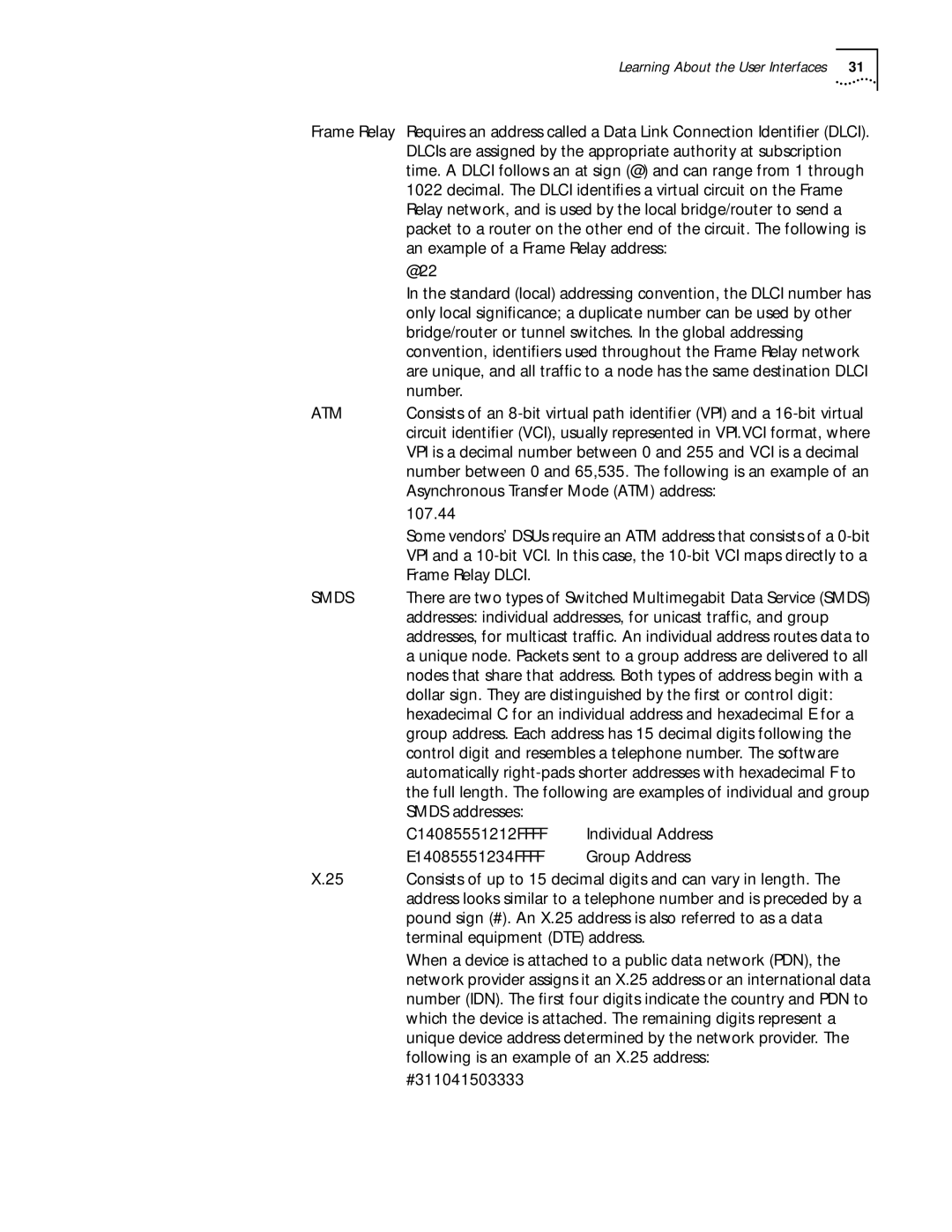|
| Learning About the User Interfaces 31 |
Frame Relay | Requires an address called a Data Link Connection Identifier (DLCI). | |
| DLCIs are assigned by the appropriate authority at subscription | |
| time. A DLCI follows an at sign (@) and can range from 1 through | |
| 1022 decimal. The DLCI identifies a virtual circuit on the Frame | |
| Relay network, and is used by the local bridge/router to send a | |
| packet to a router on the other end of the circuit. The following is | |
| an example of a Frame Relay address: | |
| @22 |
|
| In the standard (local) addressing convention, the DLCI number has | |
| only local significance; a duplicate number can be used by other | |
| bridge/router or tunnel switches. In the global addressing | |
| convention, identifiers used throughout the Frame Relay network | |
| are unique, and all traffic to a node has the same destination DLCI | |
| number. |
|
ATM | Consists of an | |
| circuit identifier (VCI), usually represented in VPI.VCI format, where | |
| VPI is a decimal number between 0 and 255 and VCI is a decimal | |
| number between 0 and 65,535. The following is an example of an | |
| Asynchronous Transfer Mode (ATM) address: | |
| 107.44 |
|
| Some vendors’ DSUs require an ATM address that consists of a | |
| VPI and a | |
| Frame Relay DLCI. |
|
SMDS | There are two types of Switched Multimegabit Data Service (SMDS) | |
| addresses: individual addresses, for unicast traffic, and group | |
| addresses, for multicast traffic. An individual address routes data to | |
| a unique node. Packets sent to a group address are delivered to all | |
| nodes that share that address. Both types of address begin with a | |
| dollar sign. They are distinguished by the first or control digit: | |
| hexadecimal C for an individual address and hexadecimal E for a | |
| group address. Each address has 15 decimal digits following the | |
| control digit and resembles a telephone number. The software | |
| automatically | |
| the full length. The following are examples of individual and group | |
| SMDS addresses: |
|
| C14085551212FFFF | Individual Address |
| E14085551234FFFF | Group Address |
X.25 | Consists of up to 15 decimal digits and can vary in length. The | |
| address looks similar to a telephone number and is preceded by a | |
| pound sign (#). An X.25 address is also referred to as a data | |
| terminal equipment (DTE) address. | |
When a device is attached to a public data network (PDN), the network provider assigns it an X.25 address or an international data number (IDN). The first four digits indicate the country and PDN to which the device is attached. The remaining digits represent a unique device address determined by the network provider. The following is an example of an X.25 address:
#311041503333
